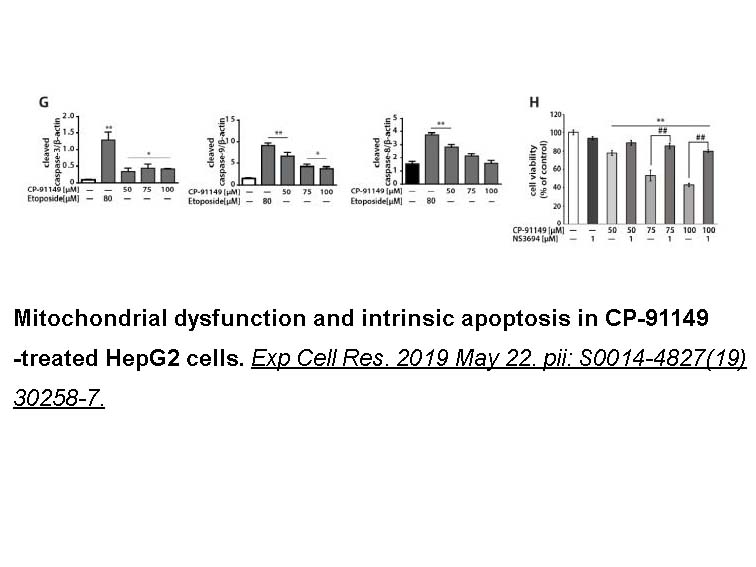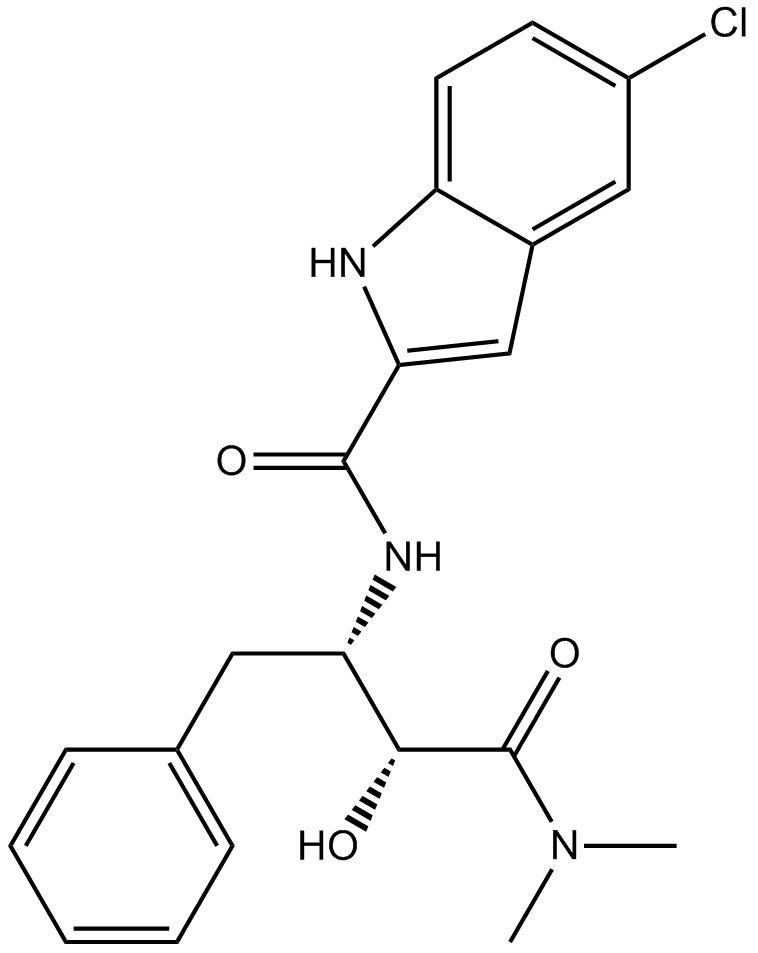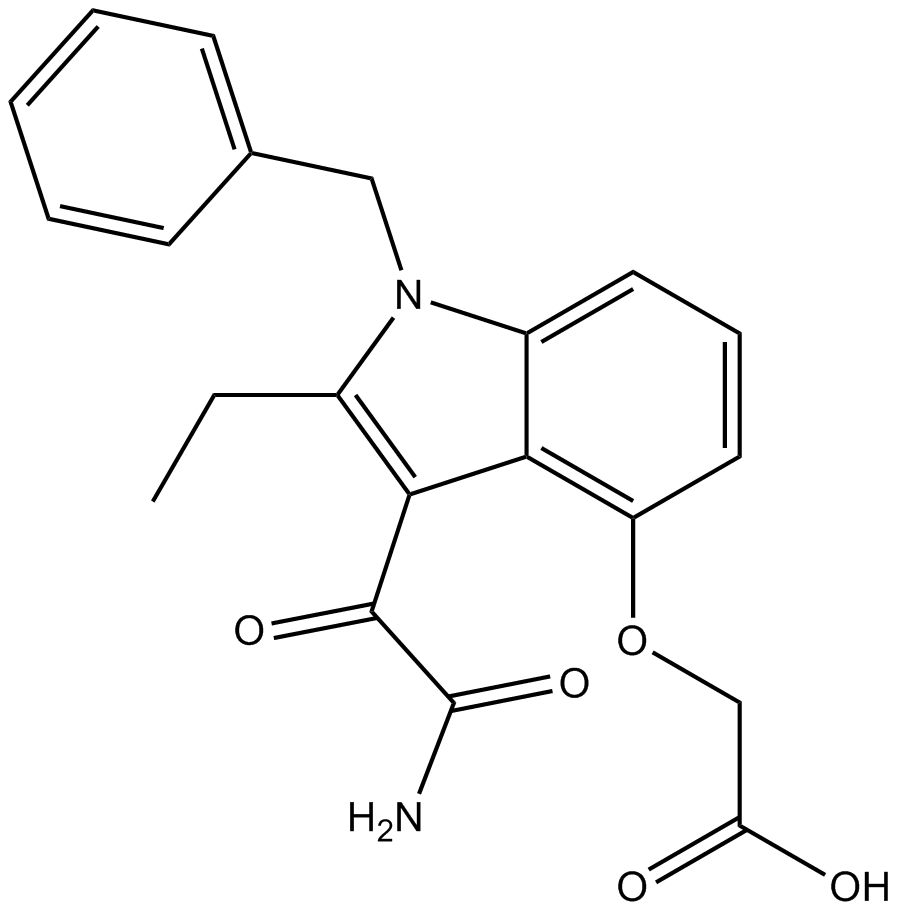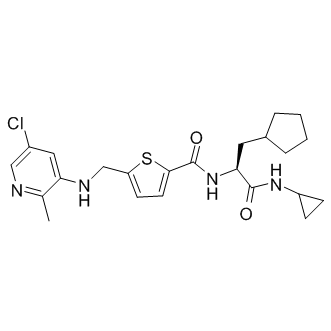CP-91149
CP-91149 (CAS 186392-40-5) is a selective inhibitor of glycogen phosphorylase (GP), an enzyme responsible for catalyzing glycogen breakdown into glucose-1-phosphate by cleavage of terminal α-1,4-glycosidic bonds. CP-91149 inhibits GP with an IC50 of 0.13 μM. In cell assays using primary human hepatocytes and isolated rat hepatocytes, this inhibitor reduces glucagon-stimulated glycogenolysis (IC50: 2.1 μM and 10-100 μM, respectively), activates glycogen synthase, and induces protein redistribution from soluble to particulate fractions, mimicking insulin effects. In vivo (ob/ob diabetic mice), CP-91149 treatment at 25–50 mg/kg rapidly decreases blood glucose without affecting normoglycemic animals, underscoring its relevance in diabetes research.
| Storage | Store at -20°C |
| M.Wt | 399.87 |
| Cas No. | 186392-40-5 |
| Formula | C21H22ClN3O3 |
| Solubility | insoluble in H2O; ≥16.4 mg/mL in DMSO; ≥3.17 mg/mL in EtOH with ultrasonic |
| Chemical Name | 5-chloro-N-[(2S,3R)-4-(dimethylamino)-3-hydroxy-4-oxo-1-phenylbutan-2-yl]-1H-indole-2-carboxamide |
| SDF | Download SDF |
| Canonical SMILES | CN(C)C([C@@H]([C@H](Cc1ccccc1)NC(c1cc(cc(cc2)Cl)c2[nH]1)=O)O)=O |
| Shipping Condition | Small Molecules with Blue Ice, Modified Nucleotides with Dry Ice. |
| General tips | We do not recommend long-term storage for the solution, please use it up soon. |
| Cell experiment [1]: | |
|
Cell lines |
Hepatocytes from the liver of male Wistar rats. |
|
Preparation method |
The solubility of this compound in DMSO﹥16.4mg/mL. General tips for obtaining a higher concentration: Please warm the tube at 37 ℃ for 10 minutes and/or shake it in the ultrasonic bath for a while. Stock solution can be stored below -20℃ for several months. |
|
Reacting condition |
2.5μm for 3h. |
|
Applications |
CP-91149 could inhibit phosphorylase potently and selectively which caused conversion of phosphorylase a to b in hepatocytes. Stimulation of glycogen synthesis by CP-91149 was due to dephosphorylation of phosphorylase a rather than inhibition of glycogen degradation or cycling. |
| Animal experiment [2]: | |
|
Animal models |
Diabetic male C57BL/6J-Lep(ob/ob) mice |
|
Dosage form |
oral dose of CP-91149 at 10, 25, and 50 mg/kg(effective at the latter two concentration) |
|
Application |
In the diabetic male C57BL/6J-Lep(ob/ob) mice, glucose lowering by CP-91149 was statistically significant and it reached normoglycemia at 50 mg/kg. It could inhibit hepatic glycogenolysis and lower plasma glucose levels. |
|
Other notes |
Please test the solubility of all compounds indoor, and the actual solubility may slightly differ with the theoretical value. This is caused by an experimental system error and it is normal. |
|
References: [1] Aiston S, Coghlan MP, Agius L. Inactivation of phosphorylase is a major component of the mechanism by which insulin stimulates hepatic glycogen synthesis. European journal of biochemistry / FEBS. 2003;270(13):2773-2781. [2] Martin WH, Hoover DJ, Armento SJ, et al. Discovery of a human liver glycogen phosphorylase inhibitor that lowers blood glucose in vivo. Proceedings of the National Academy of Sciences of the United States of America. 1998;95(4):1776-1781. |
|
| Description | CP-91149 is a selective inhibitor of glycogen phosphorylase (GP) with an IC50 value of 0.13 μM. | |||||
| Targets | GP | |||||
| IC50 | 0.13 μM | |||||
Quality Control & MSDS
- View current batch:
Chemical structure
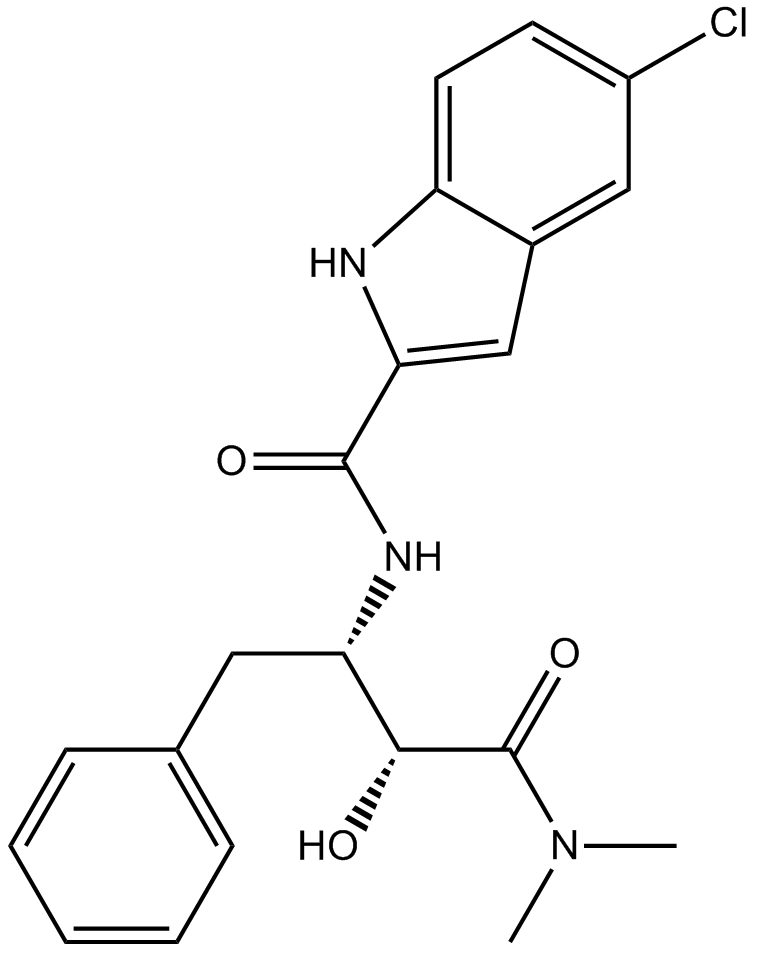
Related Biological Data
